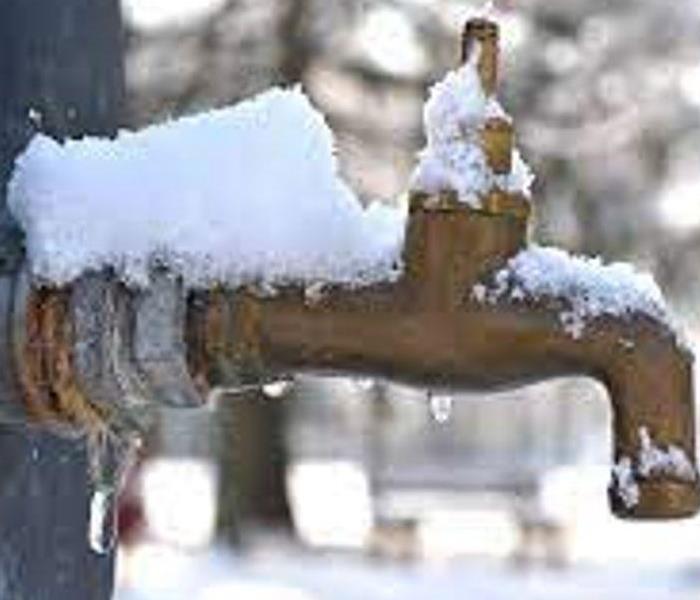OUTDOOR FAUCETS: THE ONE THING YOU SHOULD NEVER FORGET TO DO IN WINTER
7/3/2022 (Permalink)
 An outdoor water faucet is especially vulnerable to the cold, so it’s extremely important to prep your water faucets for the winter.
An outdoor water faucet is especially vulnerable to the cold, so it’s extremely important to prep your water faucets for the winter.
If you own a home, chances are pretty good that you have at least one outdoor faucet. With outdoor faucets, it’s exceptionally important to remember to detach your garden hoses at the end of the season, close the inside shut-off valve(s), and drain the faucet fixture before it freezes.
Water expands when it freezes, and nothing changes that. How much does frozen water expand? Ice takes up nearly 10% more space than the same amount of liquid water does. Unfortunately, in the case of a water pipe, the pipe is already full when water is in a liquid state, so there’s no room for expansion if the temperature drops low enough for the water to freeze. Once the water in the pipe freezes, something’s got to give, and it’s usually the pipe itself, the valves, the joints, or maybe even all three.
An outdoor water faucet is especially vulnerable to the cold, so it’s extremely important to prep your water faucets for the winter. The heat from your home that is transmitted through the pipes most likely won’t be enough to protect your outdoor faucet. Here’s what you can do to help prevent a watery disaster from striking in the middle of winter!
CLOSE THE SHUT-OFF VALVE FOR THE FAUCET
From the inside of your home or building, close the shut-off valve that controls the flow of water to the outdoor faucet(s). If the valve isn’t set back from the outer wall of your home, an accidental freeze can damage your shut-off valve, making it impossible to stop the flow of water. If your shut-offs are very close to the outer wall of your home, consider moving them back farther into your home to better protect them from freezing.
DISCONNECT YOUR HOSES!
Leaving a frozen, water-filled hose attached to the outdoor faucet is asking for trouble! Disconnect your garden hoses, drain them and hang them up for the winter. Your hoses will last longer, be better protected from the elements, and will be less likely to leak at the connectors. They’ll also be less likely to develop splits that will leak when the hose is pressurized.
DRAIN THE FAUCET
Finally, open the faucet and let any residual water drain out of the pipe. Draining the outside faucet is critical because standing water between the inside shut-off valve and the outdoor faucet can freeze and break both the fixture and shut-off valve. Creating an air space within the short segment of pipe gives any residual water room to expand if it freezes.
As an added measure of safety, insulate your pipes. Pipe insulation is inexpensive and can help protect your plumbing and valves from extreme temperature variations. Seal any open spaces, gaps, or foundation cracks that can allow cold air to circulate around your pipes. Close all basement windows and foundation vents in the winter to prevent cold outside air from reducing the ambient temperature in unheated crawl spaces and basements.
Finally, be aware that sometimes pipes and fixtures that have frozen and thawed don’t start to leak until the full water pressure is re-applied. In the spring, check your outdoor fixtures for leaks, even if you have taken steps to protect them from winter ice damage.





 24/7 Emergency Service
24/7 Emergency Service